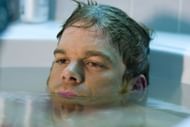Monster: The Ed Gein Story has redefined true-crime television by refusing to sanitize the mental decay that fed America’s most infamous grave-robber. This eight-part Monster anthology drama lingers by making mental illness, controlling parenting, and dark American settings central to horror.
Viewers who emerged from Gein’s farmhouse, filled with objects made from human skin, looking for similar disturbing stories, now have a roadmap. These 7 series were chosen for echoing Monster's themes: intense mother-son bonds, graphic crime scenes, probing investigations, and killers forged in early trauma.
Each entry balances plot summary with analysis, showing why the show connects to the same psychological issues Gein raised in 1957.
Disclaimer: The following TV shows are ranked in no particular order. This article solely contains the writer’s opinion.
Mindhunter, Hannibal, and 5 other disturbing series for Monster: The Ed Gein Story fans
1) Mindhunter (2017–2019)

Set in the late 1970s, Mindhunter follows FBI agents Holden Ford and Bill Tench as they build the Behavioral Science Unit and introduce the term “serial killer.” Interviews with imprisoned killers—Edmund Kemper, Jerry Brudos, Montie Rissell—act as psychological breakdowns that link childhood trauma to adult violence.
The series’ plain beige colors and bright interrogation rooms reflect the empty institution that held Ed Gein after his arrest. Like Monster, the show avoids dramatic action; the success is in building a language for understanding harm.
Each episode adds terms for issues: parental neglect, sexual disorders, and growing delusions. The camera focuses on Kemper’s large hands, like the series shows Gein’s skin-covered items—everyday objects that outlast stories and make viewers face the plainness of evidence.
2) Hannibal (2013–2015)

Bryan Fuller’s vivid remake turns the Hannibal Lecter story into a detailed mix of food art and murder scenes. FBI profiler Will Graham falls into sensitive insanity while psychiatrist Hannibal Lecter turns human flesh into fine meals.
The show’s rich visuals—slow blood flows, antler lights, mushroom gardens on bodies—match Monster’s focus on bodies as objects. Both stories use closeness as a tool; Lecter’s talks are manipulative sessions like Augusta Gein’s teachings.
Lecter’s guiding role replaces the controlling parent, but the result is the same: a quiet Midwestern mind turned into a dark figure. When Lecter puts on the plastic suit for killing, it echoes Gein from Monster, making his skin covering—skin as a record, change as a lasting mark.
3) The Fall (2013–2016)

Across three short seasons, The Fall tracks Paul Spector, a Belfast counselor who secretly strangles women and collects their personal items.
The show’s views on gender reverse Monster’s controlling parent theme: the killer obsesses over women’s home life while detective Stella Gibson uncovers police bias against women. Slow pacing—rainy old buildings, homes with police tape—matches Gein’s tight farmhouse.
The series avoids over-the-top violence, similar to the off-screen grave-robbing in Monster. Both focus on what follows: a tied stocking, a skull used as a bowl next to breakfast. This creates a close look at crimes, drawing in the viewer as part of the scene.
Read also: 10 new movies and shows to stream on Prime Video in September 2025
4) Bates Motel (2013–2017)

This modern prequel to Psycho places Norman and Norma Bates in a rain-soaked Oregon town where taxidermy, money troubles, and close family ties mix into everyday suspense.
Over five seasons, Norman’s memory blackouts build like Gein’s trophies, while Norma’s mix of protective love and harsh criticism mirrors Augusta Gein’s strict upbringing. The show’s soft-colored motel and dark farmhouse fit the pattern of American decline.
Creators Kerry Ehrin and Carlton Cuse use dream-like views similarly to Monster; bodies seem to speak, stuffed animals hint at secrets, and the border between killing fantasy and reality fades. Norman's body-keeping echoes Gein's "keep Mother close" over Psycho, tied to Ed's influence on Bloch's 1959 novel.
5) Dexter (2006–2013)

Dexter’s sunny Miami acts as a test for right and wrong, where a crime lab worker directs his killing urges toward punishing the guilty. The show’s clean kill rooms—wrapped in plastic, cleaned with bleach—contrast Gein’s messy space with human parts, but both are safe areas to handle past pain.
Dexter’s inner “dark passenger” is like Gein’s imagined voice of Augusta in Monster, a guide for cutting apart bodies. The inner narration gives Dexter the same divided mind that the series shows Gein through static-filled radios.
Viewers shift between sympathy and disgust, like in Monster, when Charlie Hunnam’s Ed asks for medicine while holding a face mask. Both ask if knowing the urge excuses it, and both end in a quiet that stays after the show.
Read also: 10 new movies and shows to stream on Netflix in September 2025
6) Luther (2010–2019)

Detective John Luther moves through a foggy, grim London while playing mind games with Alice Morgan, a smart killer who sees his morals as attractive. The show’s dark colors—gray coats, red phone boxes—bring the heavy shadows of Gein’s Wisconsin home.
Luther’s rule-bending matches how Monster mixes facts and visions, showing justice as just another tool. Like the Monster series, Luther sees a lack of family support as a strong pull. Alice’s killing of her parents mirrors the severing of family ties that defined Gein’s isolation; both clear room for new dark stories.
When Alice shares an intimate moment with Luther in an interview room, it has the same boundary-crossing feel as a scene in Monster where Ed offers a ring taken from a body to a local woman—closeness built near death.
7) True Detective (2014–)

True Detective's season one’s Louisiana swamp turns into a deep mystery where detectives Rust Cohle and Marty Hart chase the Yellow King, a child-harm group with symbols like Gein’s artifacts.
Non-linear plots—questioning scenes, hidden signs, bone crowns—mirror Monster’s broken timeline, making viewers piece together evil from past pieces. The land feels like a parent: taking in, hiding, bringing back. Both use deep thoughts as investigation tools.
Rust talks about time repeating, matching the doctor’s view that Gein’s illness mixed past and present in a cycle. When the camera shows Carcosa’s ruin, the overgrown paths feel known—an image of Ed’s house flipped out, with bone art and skins from faces.
Read also: 7 most critically acclaimed shows of 2025
Final thoughts
The 7 series above do not just copy Ed Gein’s crimes from Monster; they explore the social ground that bred them. From FBI offices to London apartments, each story goes back to the main issue: a home where love and control mix into owning, where the self is built from taken parts.
